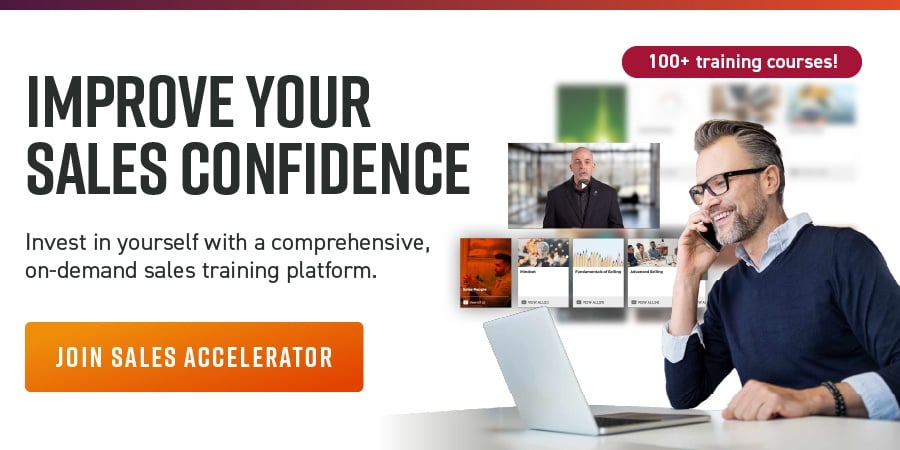While we have been distracted by technology, a pandemic, and the new business models sales organizations have adopted, every important KPI has fallen, and continues its decline. Win rates are down. Quota attainment is down. But instead of addressing the declining results, we have regressed to a more transactional approach to selling, though it fails to improve sales results.
We are now dead center in the eye of the hurricane that is the coming apocalypse of cold outreach. Instead of thinking carefully and thoughtfully about who we should target and who we should avoid, we have reverted to the strategy people use when they don’t know how to improve sales effectiveness. That strategy is to increase volume, leading some to automating prospecting sequences and the brute-force approach of harassing their prospective clients.
One salesperson shared with me that he had to make 250 outbound calls a day with 250 minutes of talk time. When I asked how many meetings he had face-to-face with a client, he explained that he could not visit the companies he called on, as it would take too much time. His sales leader was, like many, concerned about activity instead of winning.
The pandemic is over, and yet there are still sales organizations not allowing their salespeople to travel to see their clients face to face. The younger the salesperson, the more they seem to prefer virtual meetings over sitting in the client’s office. Instead of looking to technology and what some call efficiency, they should be focused on winning deals.
Your competitor will do what you will not. Imagine a salesperson has an excellent first meeting using video. That salesperson believes they have done a good job, logging the opportunity in their CRM. The next day, however, a competitor has a face-to-face meeting with a decision maker. This rep asks to walk through the prospective client’s facility and, while they are there, the contact introduces the salesperson to several important contacts. The more efficient salesperson who relied on a virtual meeting is at a disadvantage.
The ridiculous emphasis on efficiency sacrifices everything that matters. You should not worry about efficiency as it is defined today. Instead, your imperative is winning. Spending time with your prospective clients is efficient. Trying to avoid giving your clients time and attention is wasted. It leads to poor results.
Salespeople spend time on LinkedIn, where they are provided with increasingly deranged prospecting approaches that position them as something less than experts. They may get the client’s attention, but they lack the credibility necessary for the client to consider buying from them. The result is wasted time you should worry about.
What is missing from sales leaders’ priorities is the effectiveness of their sales force and their sales managers. Sales effectiveness is the number-one priority for those who want to win deals, produce net new revenue, and reach their goals and targets. Some sales leaders are too lazy to do the work to train, coach, and develop their sales force. Others are overly certain their approach is the right way to sell, even though it is between forty and sixty years old.
Those who pay no attention to the changes in B2B buying will not know that B2B selling has evolved. A simple example of these changes is how buyers can easily acquire information that a salesperson would have provided in the past. Still others in sales pretend that nothing has changed since 1967. This is the reason so many sales organizations struggle to win deals.
Consider research from Gartner and McKinsey to see what large companies believe about the future of B2B sales as one where the buyer doesn’t need a salesperson. Your clients and mine are already starting their buyer’s journey online. And if you don’t believe this, maybe pay attention to how you approach a buying decision.
You and I now need to prioritize starting the buyer’s journey before they start their own journey. We also need to have the experience, expertise, and authority to lead the client’s journey. The rate of change in our environment causes buyers and decision makers to fear making a decision, as they are uncertain. The more important the client’s initiative, the more they worry about failing. One reason your deals die is because too few salespeople are what we call being One-Up, meaning they have the insights, information, and ability to create certainty.
A List of Changes to Enable Winning
- Make your single imperative winning deals. Your success depends on your ability to win deals. No matter how much coverage in your pipeline, without winning more than your fair share, you will fail to reach your potential.
- Stop looking to technology to ensure you reach your goal. We have lost a decade or more pursuing technology as the answer to reaching our sales goals. It’s time to give up on tech and return to building salespeople. If you are not a SAAS company, don’t sell like one.
- Make sales effectiveness your number one priority. You need every sales rep to improve their ability to create value and the experience that buyers need to buy from your sales force. You need to build better sales reps if you want to win deals.
- Insist your sales force sells face to face. Look backward for the strategies of the past, including the relationships that allowed salespeople to win clients instead of orders.
Soon, you will see demand for everything collapse, as 78 million Baby Boomers retire. As globalization winds down, there will be winners and losers, and that means fewer, better salespeople and sales organizations. What we do now will affect our future. Those who focus on building a modern sales force are already winning at a high rate. Those who haven’t yet recognized what has failed, and those who refuse to acknowledge how much selling has changed, will have increasingly poor results.




.jpg?width=768&height=994&name=salescall-planner-ebook-v3-1-cover%20(1).jpg)
